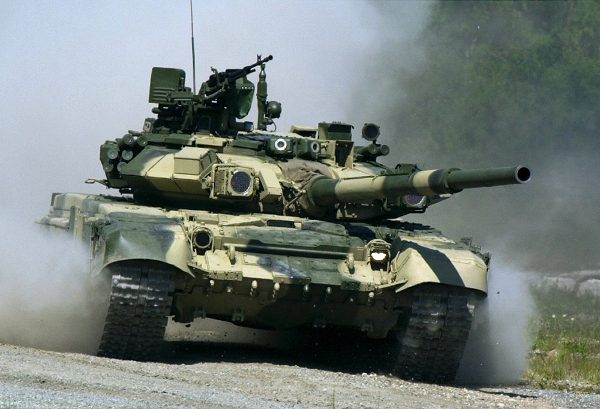With the Ministry of Defence (MoD) having recently approved the procurement of advanced protection and counter-measure system for its fleet of T-90 tanks, the Army has moved to identify Indian partners to develop the system that would enhance the survivability of armoured vehicles against incoming missiles and projectiles in the battlefield.
Contemporary combat vehicles have onboard protective-cum-warning systems that warn the crew of impending attacks and create a physical interference between the platform and hostile threat to significantly degrade the effectiveness of hostile weapons.
“T-90 S/SK tanks are the mainstay of the mechanised forces and are likely to remain in service beyond 2050. Hence, the tanks must be periodically upgraded to cater for the futuristic warfighting capabilities as also facilitate obsolescence management,” an Expression of Interest (EoI) invited by the Army this week states.
“There is a requirement to provide enhanced protection and survivability to these assets in addition to the intrinsic protection of the tanks by way of soft and hard kill measures,” the EoI adds. The Army could initially procure over 800 protection systems.
The Army has about 2,000 T-90 tanks in its inventory, which were initially procured in batches from Russia and later built by Heavy Vehicles Factory at Avadi near Chennai. India is expected to manufacture T-90s till 2028. These were also airlifted to Ladakh last year and deployed along the Line of Actual Control during the stand-off with China.
In February, the Defence Acquisition Council, MoD’s apex procurement body had cleared various proposals worth Rs 13,700 crore for acquisitions from domestic sources. This included Rs 5,300 crore for protection systems for armoured vehicles.
The hard skill and soft skill measures proposed to be retrofitted on the tanks are required to detect and then degrade or defeat incoming hostile projectiles. With advances in anti-tank weapons, armour alone is considered insufficient for protection.
The system’s soft kill component will provide an audiovisual warning on being targeted or engaged by a hostile platform, use decoy smoke to counter lasers and camouflage against detection and lock-on by the enemy. It is aimed at degrading or defeating in-coming laser, infra-red or radar-guided missiles by means of electro-optical signals or jamming. The hard kill component will use sensors to detect incoming projectiles and use countermeasures like grenades to destroy them before they can hit the tank.
The Army’s requirement is for a system that can detect more than one direction of attack simultaneously and protect armoured vehicles against threats from guided missiles and projectiles fired up to a velocity of 1000 meters per second. It should be capable of all-weather day and night operations at temperatures up to 45 degrees Celsius.
Source: Tribune India
You may also like
-
IAF Aircraft Set Course For Exercise Eastern Bridge VII At Oman
-
IAF Set To Host The Indian Defence Aviation Exposition-II At Jodhpur
-
Defence Secretary to co-chair 5th India-Philippines Joint Defence Cooperation Committee meeting in Manila
-
Simultaneous Launch Of ‘malpe And Mulki’, Fourth And Fifth Ships Of Asw Swc (Csl) Project
-
Aatmanirbharta in Defence: MoD signs Contract with HAL for 240 AL-31FP Aero Engines for Su-30MKI Aircraft
